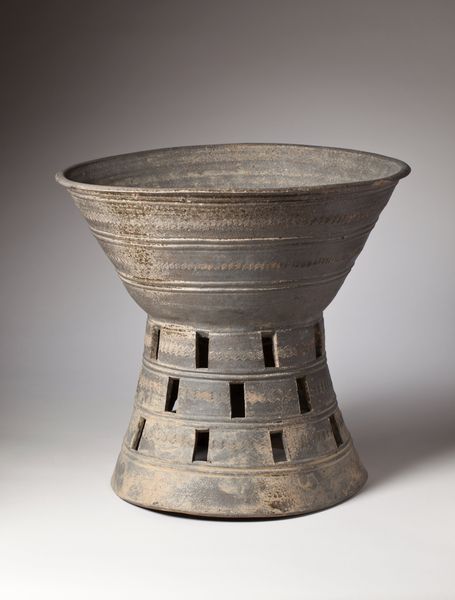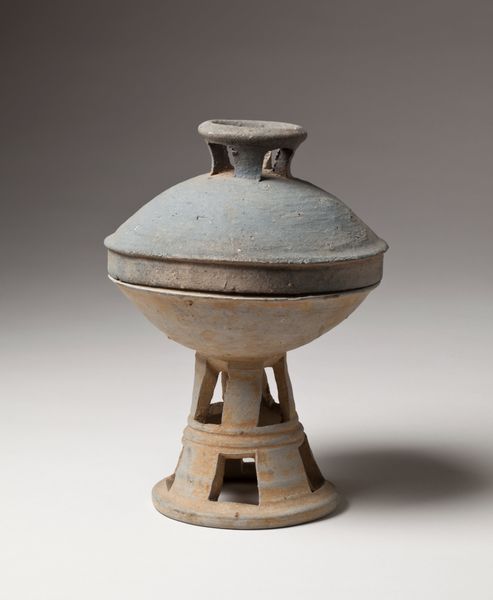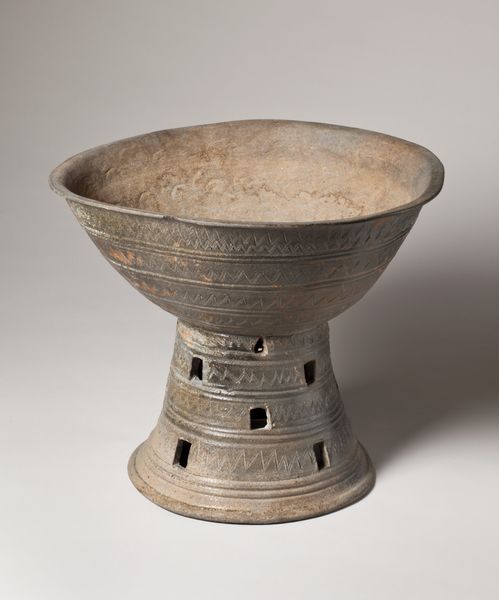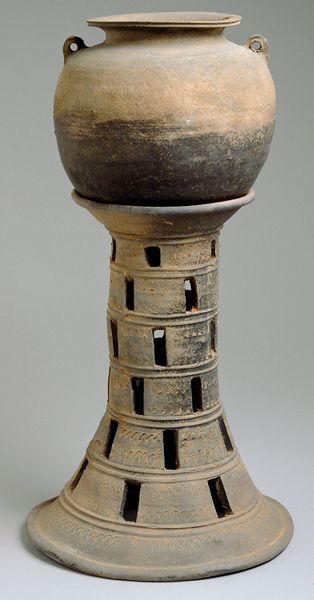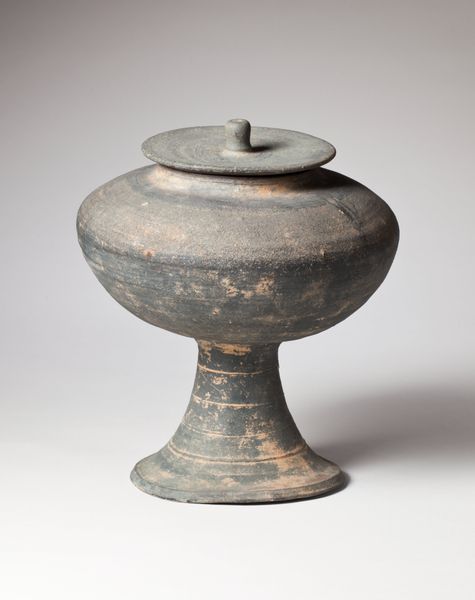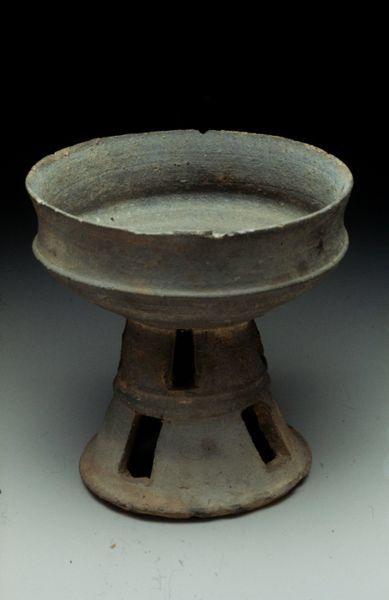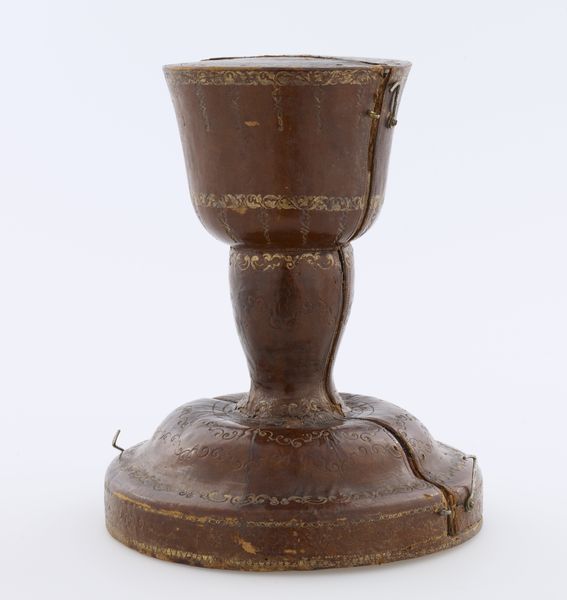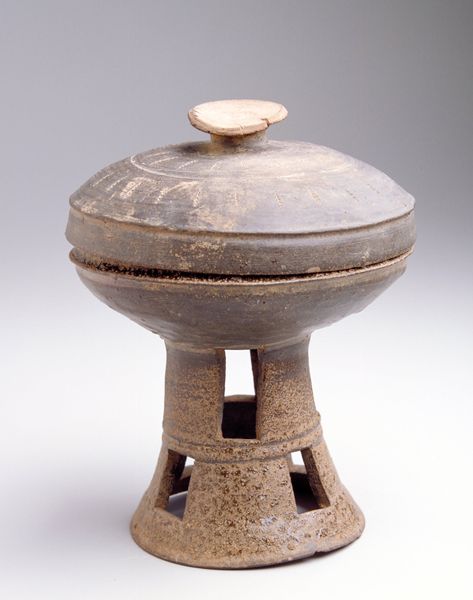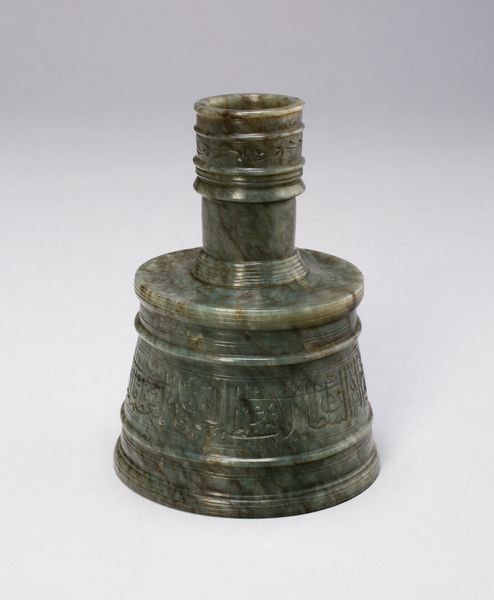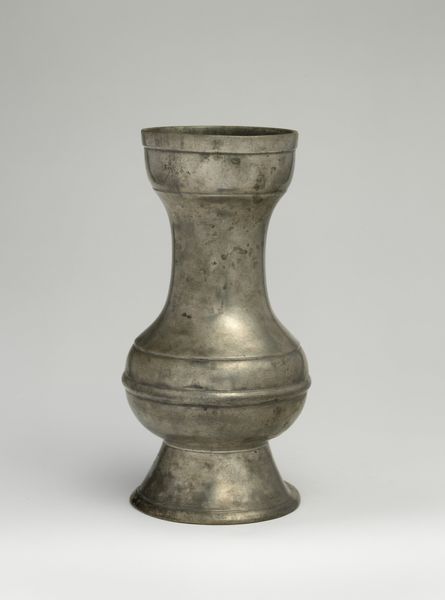
ceramic, sculpture
#
ceramic
#
stoneware
#
ancient-mediterranean
#
sculpture
Dimensions: 13 1/4 × 10 3/4 × 10 5/8 in. (33.66 × 27.31 × 26.99 cm)
Copyright: Public Domain
Curator: Let’s turn our attention to this intriguing stoneware piece, "Tall stand with perforated base," dating back to the 5th century. Editor: The craftsmanship is apparent. Even just at a glance, one can notice its rhythmic proportions, and those evenly spaced perforations provide a striking textural contrast. There’s a sense of sturdy elegance. Curator: It certainly resonates across centuries. These types of stands played an essential role in burial rituals, reflecting ideas about hierarchy and the afterlife, suggesting the elite members of ancient communities used these objects. What thoughts does that give you? Editor: Semiotically, the empty spaces, these window-like cutouts, can function almost like speech acts within the object itself. Curator: Yes, the placement is key. Looking at its ancient function—the stoneware stand provided not only material stability but also, maybe, a passage for communicating between worlds. What were those communications? Editor: Given that function, the perforations suggest light and shadows playing across objects in those burial chambers. The visual language emphasizes form, proportion, and that interplay of solid and void—purely from a visual standpoint. It shows remarkable sophistication. Curator: Sophistication linked intimately to ritual and status. When looking at this, I'm immediately interested in gender and social identity—who had access to this kind of status display in the afterlife? Editor: A fair point. I’m drawn to the visual poetry inherent in the work. How the eye travels and makes sense of its structure is significant on its own terms. Curator: Perhaps it’s the synthesis of utility, meaning, and craftsmanship that makes this tall stand still captivating centuries after it was made. It's also that historical reminder of cultural practices concerning mortality that still holds a certain weight today. Editor: I agree, those are relevant observations. Ultimately, its aesthetic resonance for me hinges upon a timeless balance of solid form and the intangible play of light.
Comments
minneapolisinstituteofart almost 2 years ago
⋮
Perforated stoneware such as this stand are associated with the Silla Kingdom and Gaya Confederacy in southeast Korea. The region is peppered with excavation sites, where discoveries continue to be made to this day. This tall stand, which would have supported a smaller dish or jar for storing food or liquid, was probably used in a burial context.
Join the conversation
Join millions of artists and users on Artera today and experience the ultimate creative platform.


